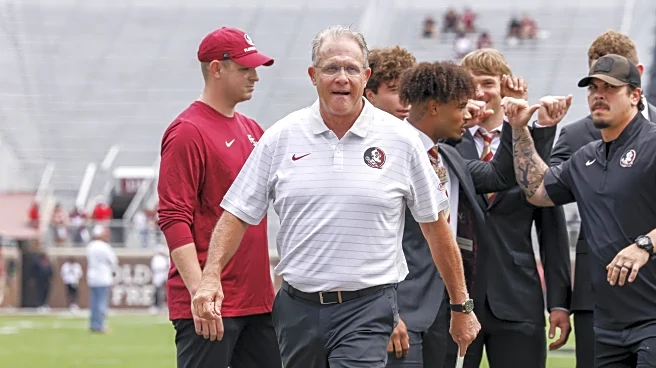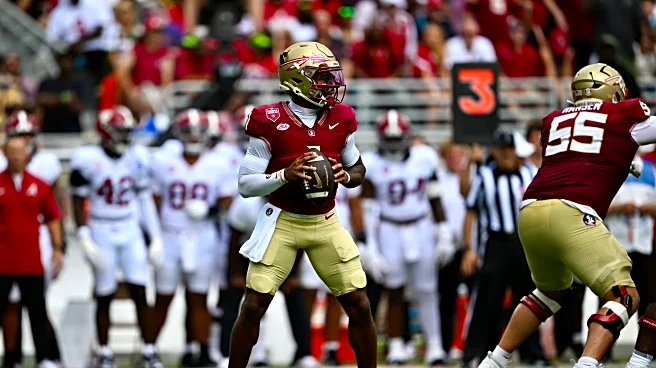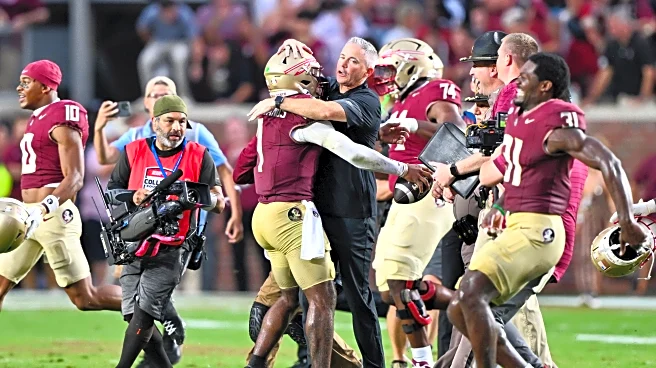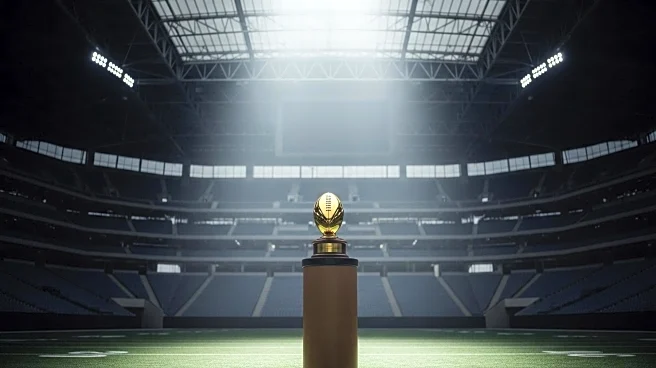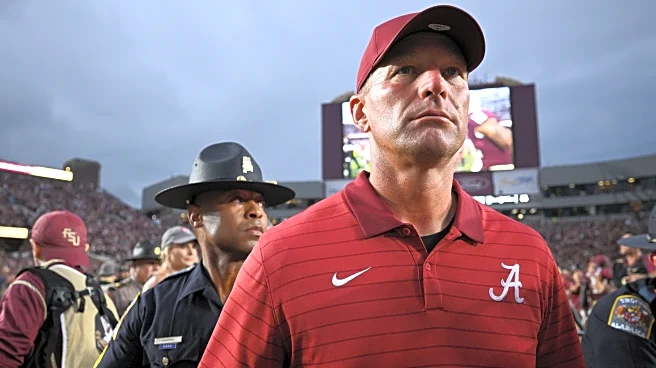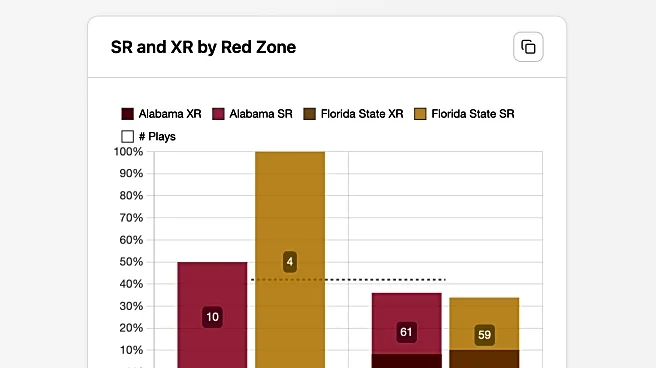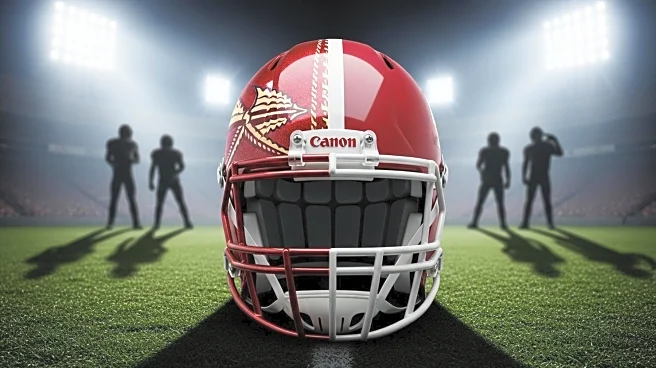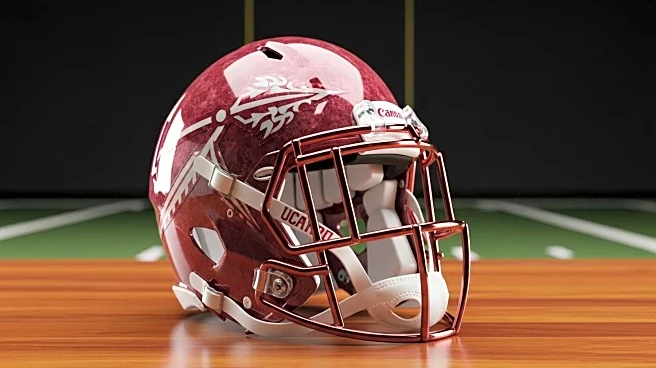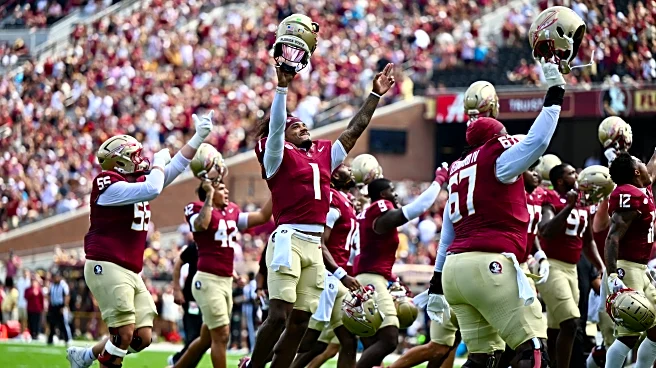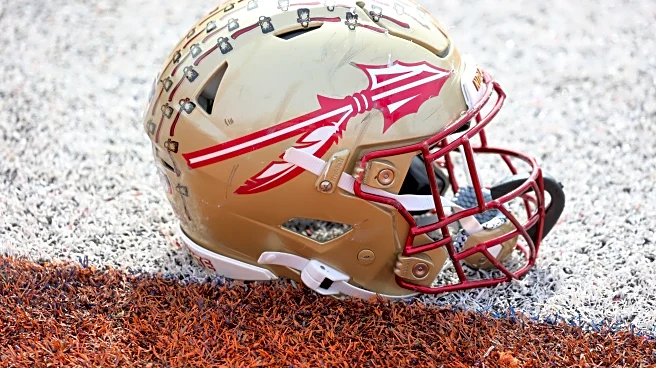
In the aftermath of Florida State’s 31-17 win over the Alabama Crimson Tide, Seminole offensive coordinator Gus Malzahn said he had been concerned about how FSU’s veteran but new offensive line would do against a Bama defensive front full of future NFL players.
It’s safe to say that concern was put to rest early in the game.
FSU ran the ball 48 times and averaged nearly five yards per rush. 23 of those runs went for at least four yards, and these runs will be our focus in this article. Quarterback
Tommy Castellanos was the Seminoles’ leading rusher, keeping or scrambling 15 times for 86 yards and a score.
Castellanos is a dynamic athlete for the quarterback position. He’s listed at 5’11 and 200lbs, and Malzahn’s gameplan against the Tide revolved around him. As I wrote last December, I anticipated that due to his smaller size Malzahn would probably use him similarly to Nick Marshall at Auburn, meaning more outside runs off read options than power runs between the tackles. But that wasn’t really the case against Alabama.
Castellanos scrambled four times, three of those right up the middle of the Alabama defense, for 33 yards and two first downs.
But it was really Castellanos’ execution of the power read and read option games that truly gashed the Crimson Tide. As a refresher, the read-option is usually run with inside zone (IZ) with the offensive line zone blocking up front. Usually a defender is left unblocked for the quarterback to “read” and decide whether to keep the ball or hand it off. It’s important to note that on read-options the QB would be running to the outside while the running back would be running between the tackles. On power reads, the offensive line is pulling at least one offensive lineman, usually a guard. A defender is still left unblocked for the QB to read, but should the QB keep the ball he would be running between the tackles while the RB would run to the outside.
Of all the runs that went for at least four yards:
On read-option QB keepers to the outside, Castellanos took three of them in the first half and none in the second half, for roughly 20 yards and a first down and a touchdown.
On power read keepers between the tackles, Castellanos had one in the first half for five yards and a first down, and two in the second half for 16 yards and a first down.
Before we get into specific plays, it’s important to note that Alabama looked unprepared for all the backfield motion that’s inherent to Gus’ power-spread scheme. Alabama’s linebackers in particular were poor. Malzahn’s variations of backfield motions – the backbone of his sequence football – had the Crimson Tide’s eye discipline in a blender all game. A quick refresher:
Tubby Raymond defined three types of series or groups of plays necessary to execute sequence football:
- Those that threaten or attack different parts of the field with the same backfield motion (but different blocking schemes)
- Those that attack different parts of the field with different backfield motions while using the same blocking scheme
- Those that use offensive motion as misdirection, such as the offensive line all blocking one way while the ball carrier goes in the other direction.
Transfer tight end Randy Pittman, who Malzahn brought with him from UCF, was excellent and a huge part of the offense. Malzahn also utilized numerous players on jet motions including Jaylin Lucas, Micahi Danzy, Gavin Sawchuk, and more. When we talk about backfield motion we also include any pulling linemen. The play might follow a pulling lineman, it may go in the opposite direction, and they will pull on passing plays as part of the protection scheme. It’s all working to slow down the defensive front and to get defenders out of position. FSU would run the read and power options with the running backs and jet motion players at the mesh point.
Let’s get to it:
This is Castellanos’ touchdown off the read-option, an important response to Bama’s opening drive. Pittman, 13, moves out to execute a block in open space. Alabama defensive lineman LT Overton said before the game,
“We played a shifty, mobile quarterback every day in practice last year,” Overton said. “So, it’s nothing different, just being able to keep them contained, keeping our rush lanes and stay in check and making sure, he just keeps the ball like we want to make sure he doesn’t want the ball in his hands anymore.”

In hindsight, it seems that Alabama’s gameplan – to intentionally force Castellanos to keep the ball and then rally to tackle him to force bad reads later in the game – was poorly thought out. It’s the opposite of what I would have expected Bama to do. Here, Castellanos reads #42 and keeps the ball and runs outside behind Pittman. He beats the defense to the corner pylon with help from a disgusting hesitation move. Bama should have tackled him out at the 1-yard line.
Below is Danzy’s touchdown, the play is GT Counter Bluff Reverse, easily the coolest playcall of the day. The “backside” guard and offensive tackle, here 67 Richie Leonard and 55 Gunnar Hansen respectively, pull to the right, which is meant to pull the defense’s eyes that way. Castellanos executes a mesh read with the running back, Roydell Williams. Except, Hansen stops his pull and comes back to the play side which is a new, or at least uncommon, wrinkle to this play. Apparently, Gus Malzahn is not done innovating (it’s usually done with pulling the guard and H-Back/TE player, or GH Counter Bluff Reverse). Malzahn must be a fan of Hansen’s athleticism.

In this still shot, you can see Hansen on the left side already stopping his momentum to come back the other way. Danzy is coming on the reverse. I selected this frame because you get a great look at how flat-footed the Bama defenders are, especially the linebackers. This is the 1st Quarter. They already have no idea who is going to get the ball.
We also have to mention the excellent downfield blocking by Florida State’s receivers all game, including Duce Robinson on this play. Danzy does not score without Robinson’s effort. Credit goes to the players and new wide receivers coach Tim Harris.
The next play is Jet/QB Power Read, the moment I was first surprised by what I was seeing from Gus and Castellanos. This is 3rd and 4 with the game tied in the 2nd Quarter. Leonard (67) pulls and Lucas is running the Jet from the slot. You get a great look here at Castellanos reading the mesh with Lucas to see if he’s going to give it to Lucas to the outside or keep it. He keeps it and follows Leonard between the tackles. He actually shows great vision to cut it back behind Micah Pettus (57) and picks up the first down.

Obviously, running Castellanos between the tackles increases his chance of injury. However, even if it’s not a staple of the offense this year the way it was when Malzahn had Cam Newton at QB at Auburn, the fact that FSU has now put this on tape means defenses are going to have to account for it. I suppose, in hindsight, it makes sense. Castellanos is roughly the size of a running back; they must feel good about his ability to hold up running between the tackles.
At halftime, Alabama head coach Kalen DeBoer said he wanted his defense to stop hesitating and to just play their assignments. It appears to me they made two adjustments. The first was to change how they were playing the option to force Castellanos to hand the ball off. The second was to blitz the mesh point. The thinking being, you don’t have to watch a lot of the backfield motion if you just blow it up.
It did not work out for them.

This should be a negative play for Florida State. There are three defenders in the backfield. Castellanos makes an easy read and hands it off to freshman running back sensation Ousmane Kromah who runs right by two defenders and bounces it outside and picks up the first. The speed and timing of the execution of the mesh point by Castellanos is impressive, as is Kromah’s athleticism. Bama didn’t really try to blitz the mesh point again.

Malzahn did not utilize the HUNH (Hurry-Up, No-Huddle) as much as I thought he would, but he did strategically use it after big plays and in other more subtler ways. Hit a long gain, the offense would run up and snap it as quickly as possible. Caziah Holmes would score off of this, as Malzahn again went to one of his HUNH staples in what’s called a Sugar Huddle. It’s worth checking out the entire thread below.
In the 4th Quarter we get to my favorite playcalls of the day. Alabama was forcing the ball out of Castellanos’ hands? Fine, he would call QB Counter GT Bash twice. Bash is another of Malzahn’s favorite plays. Again, I was surprised that FSU would do this, but it speaks to the belief in Castellanos’ skill set. The first time they ran it, Castellanos picked up six yard on 2nd and 7. I want to show the second time they ran it which was late in the game, but that would be getting ahead of ourselves. First, the extremely gutsy 4th down call Mike Norvell made deep inside FSU territory which turned the momentum back to FSU. This was a few plays after the first Bash call.

To me, this looks like split-zone read option. The offensive line is zone blocking up front with Pittman coming across to block the edge defender. Again we see Castellanos properly executing the read-option – or, perhaps, the read-option was window dressing on this play – by “reading” the unblocked backside defender. This play works not just because of the blocking up front between the excellent center Luke Petitbon (51) and right guard Adrien Medley (76), but because of having a dynamic threat at the quarterback position the defense must account for. It freezes the Bama defender in time for Pittman to block him, likely to stop him from chasing this run down from the backside. But it’s useful because of what it allows playside – FSU gets a hat for hat, six blockers to six defenders. 1st down ’Noles.
Shortly after the conversion, FSU runs the same GT Counter Bluff Reverse with Danzy again, and it goes for more than 20 yards again. At this point, it seems Malzahn felt like he could call whatever he wanted to and he knew it would work.

Look how flat-footed the Alabama defenders are! This is the second time they’re seeing this call and they’re out of position and four players are caught with their eyes in the backfield. They are waiting to react to what the offense is doing and in doing so they are already too late to defend the play which outflanks them out in space.
FSU would close out this drive with Sawchuk’s physical run for a touchdown. He starts the play lined up at wide receiver to the boundary and uses “Reload” motion to move into the backfield off-set to Castellanos. Once again, the motion causes Alabama’s defenders to have to quickly adjust or risk being caught out of position.

Castellanos runs the mesh point with Sawchuk. He could keep the ball here, and we may see him do just that later in the season. But the read is to hand it off so he does, and Sawchuk runs with authority and scores, with great blocking up front.
Finally, we get to QB Counter GT Bash again. It’s 31-17 and FSU is trying to close out the game with under 5 minutes left, on a 2nd and 9.

Castellanos is running the mesh with Sawchuk on the Jet motion. You can see the third-level Bama defenders reacting to it. The backside guard and tackle Leonard and Hansen are pulling. Castellanos keeps it and follows them through the hole. Again, we are seeing a power running game with the quarterback. Gus and Florida State clearly believed they had an advantage running Castellanos into the middle of Alabama’s defense.

You can see here the Alabama defender has overrun the play. Castellanos can be hard to see between the tackles. Castellanos squeezes between the defenders and then leaps forward to convert the first down.
Alabama’s defense did not do a good job with their run fits all night and were less physical than Florida State at the point of attack. Aside from the Tide’s first offensive possession FSU dominated the line of scrimmage on both sides of the ball. It was shocking just how good and cohesive FSU’s offensive line looked against what is supposed to be a very talented defensive front for Alabama. It was their first game together. FSU was running a new scheme on both sides of the ball. Gus’ offensive gameplan seemed excellent, while Alabama’s was questionable (on both sides of the ball).
We will find out in the coming weeks just how good FSU and Alabama really are, but it’s clear that preseason expectations for the Seminoles will need to be readjusted.
